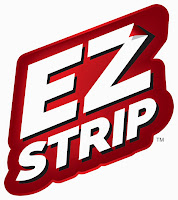Methylene Chloride is a common solvent and degreaser widely used in industry and consumer products, such as paint strippers and aerosols. It has caused acute poisonings resulting in death and is considered a workplace carcinogen. Despite serious health hazards and the availability of cost-effective safer alternatives, high concentrations of MC are still used in workplaces and in consumer products. Numerous poisonings and deaths have been reported over several decades among workers and consumers using furniture strippers or other products containing MC in unventilated areas. The U.S. Department of Health and Human Services (HHS) Household Products Database lists 27 consumer products containing MC, most common are paint strippers with concentrations greater than 50 percent. Methylene Chloride has been banned from paint strippers (paint or graffiti removers) in the EU. Despite widespread recognition of harm, MC is still Not Adequately Regulated for consumer use in North America. For more info on current US regulations regarding Methylene Chloride follow: https://www.nrdc.org/sites/default/files/methyleneChloride.pdf
MC based paint strippers are an EXTREME hazard. Thirteen bathtub refinishers from ten states have died (2000- 2011) after inhaling toxic Methylene Chloride while stripping residential tubs. Ten different stripping products, containing 60 to 100% MC, were associated with the deaths. In each case, ventilation and respiratory protection were absent or inadequate. MC vapor is absorbed quickly by the lungs at low concentrations that you cannot smell. Filter and respirator cartridges don’t protect you from MC vapor. Instead, you need a full-face supplied air respirator. For more info on bathtub refinisher deaths follow: http://www.lni.wa.gov/Safety/Research/Files/MethChlorideHazardAlert.pdf
Part of the problem is there really is no safe way for consumers to use these products without extensive safety equipment. The safety equipment needed to properly protect yourself is expensive and often not even all available in the same place you buy the stripper. Here is what's required based off of Safety Data Sheet info for Methylene Chloride Personal Protective Equipment:
Gloves and Clothing - Avoid skin contact with Methylene Chloride. Wear personal protective equipment made from material which cannot be permeated or degraded by this substance. Safety equipment manufacturers recommend Polyvinyl Alcohol and Silver Shield/4H for gloves and Tychem Responder and TK; Zytron 500; ONESuit TEC; and Trellchem HPS and VPS, or the equivalent, as protective materials for clothing. Eye Protection - Wear chemical safety goggles and/or a full face shield where splashing is possible. Maintain a proper working eyewash station near work area. Respiratory Protection - Where the potential exists for exposure over 25 ppm, use a NIOSH approved supplied-air respirator with a full face piece operated in a pressure-demand or other positive-pressure mode. For increased protection use in combination with an auxiliary self-contained breathing apparatus operated in a pressure-demand or other positive-pressure mode.
Not only is this information confusing but it is so critical to ensure your safety! So when I say there really is no practical safe way for consumers to use Methylene Chloride based products I mean just that. And to make matters worse the confusion doesn't stop there depending on the product Methylene Chloride could be hiding under a different name as it is also known as Dichloromethane, Methylene dichloride, and DCM.
So what's my recommendation when stripping paint? Don't use Methylene Chloride base strippers ever! There is no reason to with so many safer choices. At the top of that safer choice list you will find Dimethyl Esters (also known as Dibasic Esters, DBE, and DMEs*) which are readily biodegradable, low odor, low VOC solvents used in a wide variety of industrial and specialty applications. DBEs are excellent solvent substitutes in many stripping applications. Commercial acceptance and use of dimethyl esters and dibasic esters continues to increase due to their positive economic, environmental and performance characteristics. For more info on DBEs follow: http://www.jrhessco.com/dimethyl-esters-a-versatile-alternative-solvent/ The number one line of stripping products using these DBEs is a Canadian company called EZ Strip you may have seen them in the paint stripper aisle at your local Home Depot or seen them in action removing a large variety of materials from various substrates on You Tube check out the EZ Strip You Tube Channel here https://www.youtube.com/TheEZstrip. And the answer to the big question is yes they work amazingly with skin safe formulas and no harsh fumes. The next time you want to remove, refinish, or restore think twice about what you want to expose yourself and your family to. EZ Strip can solve your paint stripping problems without the toxic hazards or need for expensive protective equipment. Work indoors or in tight spaces were ventilation is just not possible! Make your next removal project a successful and safe one!





No comments:
Post a Comment